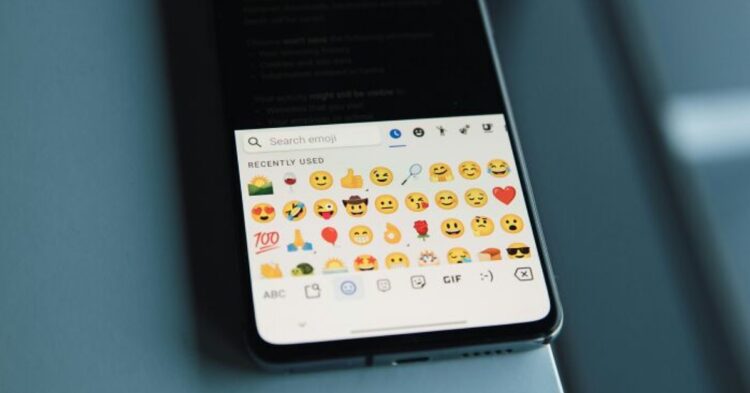Gen Z views the classic smiley face emoji as passive-aggressive, often seeing it as a sarcastic or insincere expression in digital conversations. This shift in perception highlights how the meaning of emojis can vary across generations and contexts, especially when used ironically. The emoji, traditionally seen as friendly, has taken on a new tone in some circles, causing younger people to seek alternative ways to communicate their emotions more authentically.
The Rise of Emojis and Digital Language
Embed from Getty ImagesEmojis have evolved into a universal digital language, replacing traditional face-to-face communication in texts, chats, and emails. What started as a way to personalize messages has turned into a complex form of communication. As emojis gained popularity, different generations began attaching their own meanings to the same symbols, leading to varied and sometimes confusing interpretations.
A Simple Emoji with Hidden Depths
Embed from Getty ImagesFor many, the smiley face emoji is a simple, friendly way to end a message. However, for Gen Z, it carries a more complex meaning, often associated with sarcasm or insincerity. As 21-year-old Hafeezat Bishi notes, it’s frequently used ironically, implying annoyance, passive aggression, or mockery, depending on the situation.
From Friendly to Faux-Friendly
Embed from Getty ImagesWhile older generations see the smiley face as a way to lighten the mood, Gen Z often perceives it differently. As 23-year-old Ellie York points out, the emoji can feel “sinister” with its sarcastic, fake tone. When used by older people, it may seem out of touch or condescending, making younger people interpret it as passive-aggressive rather than friendly.
Thumbs Up: The Emoji That’s Too Easy
Embed from Getty ImagesThe thumbs-up emoji has become controversial for Gen Z, who see it as “passive-aggressive” or “impersonal.” Rather than signaling approval, it feels distant and curt. In the workplace, where Gen Z values genuine engagement, a thumbs-up can come across as dismissive and cold.
Workplace Emoji Tensions
Embed from Getty ImagesThe generational divide over emoji meanings extends to the workplace. One Reddit user expressed discomfort with receiving constant thumbs-up reactions on Microsoft Teams. While older colleagues see it as a simple acknowledgment, Gen Z views it as emotionally detached and prefers more personal responses, like an exclamation mark, a heart, or “thanks.”
Emojis and Tone
Embed from Getty ImagesA significant part of the emoji confusion lies in context. The same emoji can carry wildly different meanings depending on the situation. For example, a smiley face in a work email might seem like an attempt to soften the tone, but for Gen Z, it can feel insincere. It’s all about the relationship between the sender and the receiver, and for Gen Z, emojis are no longer just fun symbols—they are integral to tone and intent. Without context, a thumbs-up or smiley face can easily be misinterpreted.
Generation Z’s Sarcastic Take on Emojis
Embed from Getty ImagesGen Z uses emojis, especially the smiley face, ironically rather than to express genuine emotions. Unlike previous generations, who use emojis to reflect true feelings, Gen Z often uses them for passive-aggressive sarcasm. As 23-year-old Ellie York explains, the smiley face now conveys an ironic distance, adding a layer of sarcasm rather than simple happiness.
The Emotional Disconnect of Overused Emojis
Embed from Getty ImagesGen Z feels alienated by overused emojis, like the thumbs-up, which have lost their original meaning. What once conveyed genuine emotion now feels like a lazy shortcut. For Gen Z, communication relies on authenticity, and emojis that come across as default or impersonal fail to meet their expectations for meaningful interaction.
The Blushing Smiley: A Solution or a Cop-Out?
Embed from Getty ImagesIn response to the backlash, many people, particularly older generations, have begun switching to more nuanced emojis to convey warmth. The blushing smiley face has emerged as an alternative to the classic smiley, aiming to soften the sarcastic edge Gen Z associates with the latter. While this may be a more acceptable alternative, it’s not a guaranteed fix. For Gen Z, the blushing smiley is just as easily read as a forced effort at being “nice” rather than genuine.
From Innocent Icons to Complex Cues
Embed from Getty ImagesAs digital communication progresses, so do the meanings behind emojis. The shift in how different generations interpret certain symbols shows how these once-simple icons are constantly evolving. What was once a friendly gesture now carries layers of irony for Gen Z, leading to questions about their future. Will emojis ever regain their original innocence, or are they destined to remain symbols of evolving, generational nuance?























































